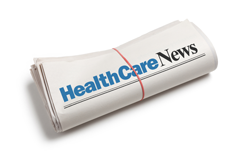 Hospital emergency departments are a critical and indispensable component of the U.S. health care system which is why overuse has become a national concern and worry amongst hospitals, policy makers and healthcare providers.
Hospital emergency departments are a critical and indispensable component of the U.S. health care system which is why overuse has become a national concern and worry amongst hospitals, policy makers and healthcare providers.
While their traditional mission is to provide trauma and emergency services for people in imminent danger of losing their life or suffering permanent damage to their health, the role of emergency departments has evolved over the past several decades. An increasing number of people are using hospital emergency departments for non-urgent care and for conditions that could have been treated in a primary care setting.
Why do patients seek care in the emergency department as compared to other care settings? Here are five causes of emergency department overuse:
-
Patients have limited access to timely primary care services.
-
The emergency department provides convenient after-hours and weekend care.
-
The emergency department offers patients immediate reassurance about their medical conditions.
-
Primary care providers refer patients to the emergency department.
-
Hospitals have financial and legal obligations to treat emergency department patients.
The first four causes all relate to shortcomings in the primary care system. The rise in patient demand, fueled by an aging population and the growing burden of chronic disease, is outpacing the supply of primary care providers, which is compromising the system’s ability to deliver quality primary care services to all patients. Thus, the emergency department has increasingly filled that gap.
Related article: The Aging Effect on Primary Care
Related article: Why The Demand For Primary Care Physicians Outpaces Supply
For example, the inability of primary care practices to provide patients with timely appointments and after-hours and weekend care has driven patients to the emergency department for conditions that arise or worsen during those hours. Likewise, when patients in need of reassurance are unable to make an appointment or even speak with their primary care provider, they seek care at the emergency department.
Finally, patients also seek care in the emergency department at the explicit instruction of their primary care provider, their staff or answering service. Providers are increasingly overextended and are often unable to provide patients with same-day or even same-month appointments.
Consequences of Emergency Department Overuse
Inappropriate emergency room use creates major inefficiencies in both care and cost.
1. Crowding, long waits, and added stress on hospital resources, thereby lowering the quality of care for those with true medical emergencies.
2. Excess Costs
Emergency room use costs vastly more than its alternative. Experts estimate that the cost of an emergency department visit for a non-urgent condition is two to five times greater than the cost of receiving care in a primary care setting for the same condition.
Given cost differences and the high number of avoidable visits, it is estimated that emergency department overuse costs approximately $38 billion annually.
| Average cost of emergency department visit: | $767 |
| Average cost of office-based visit: | $187 |
| Cost difference: | $580 |
Cost Difference X (Total # of Emergency Department Visits X Percentage of Avoidable Emergency Department Visits) = National Emergency Department Overuse Costs.
$580 X (116.8 million visits X 56% avoidable Emergency Department Visits) = $38 billion
Nationally, 56%, or roughly 67 million visits, are potentially avoidable. Reducing this trend represents a signicant opportunity to improve quality and lower costs in health care. Reducing the overuse of emergency rooms will improve the care received by both urgent and non-urgent patients while cutting overall healthcare costs by billions of dollars each year.
3. Fragmented Care
A recent study found that most patients do not fully understand their emergency department care or their discharge instructions. Likewise, the health care system is poorly equipped to share patient visit information efficiently or quickly across care settings. Thus, care in the emergency department is rarely coordinated with care that occurs elsewhere in the system, including in the primary care provider’s office.
4. Overloading Hospitals’ Resources
An overload of hospitals’ resources make it harder for those with urgent conditions to receive the care they require.
5. Emergency Department Diversion
Nearly one-third of all hospitals have experienced periods of “Emergency Department Diversion,” having to divert some or all ambulances to other hospitals. In 2003, emergency room overcrowding forced half a million ambulances to be diverted; averaging one ambulance rerouted every minute.
The Solution
Increasing access to primary care services can reduce emergency department overuse by up to 56%. A number of tested measures already exist, including offering alternative approaches to primary care, specialized services for vulnerable populations, and effective chronic disease management.
Related article: Direct Primary Care Saves Patients Money
Related article: Top Reasons Why Patients Love Direct Primary Care
But one solution stands out amongst the rest and is growing in popularity. The solution is called Direct Primary Care. Direct primary care is a newer form of concierge medicine in which patients pay a modest monthly membership fee in exchange for unlimited primary care services such as all-day access to a physician and unlimited appointment scheduling.
Are you interested in enrolling with a direct primary care practice? You're in luck. Total Access Medical is offering you the opportinity to meet for free with a physician today.

